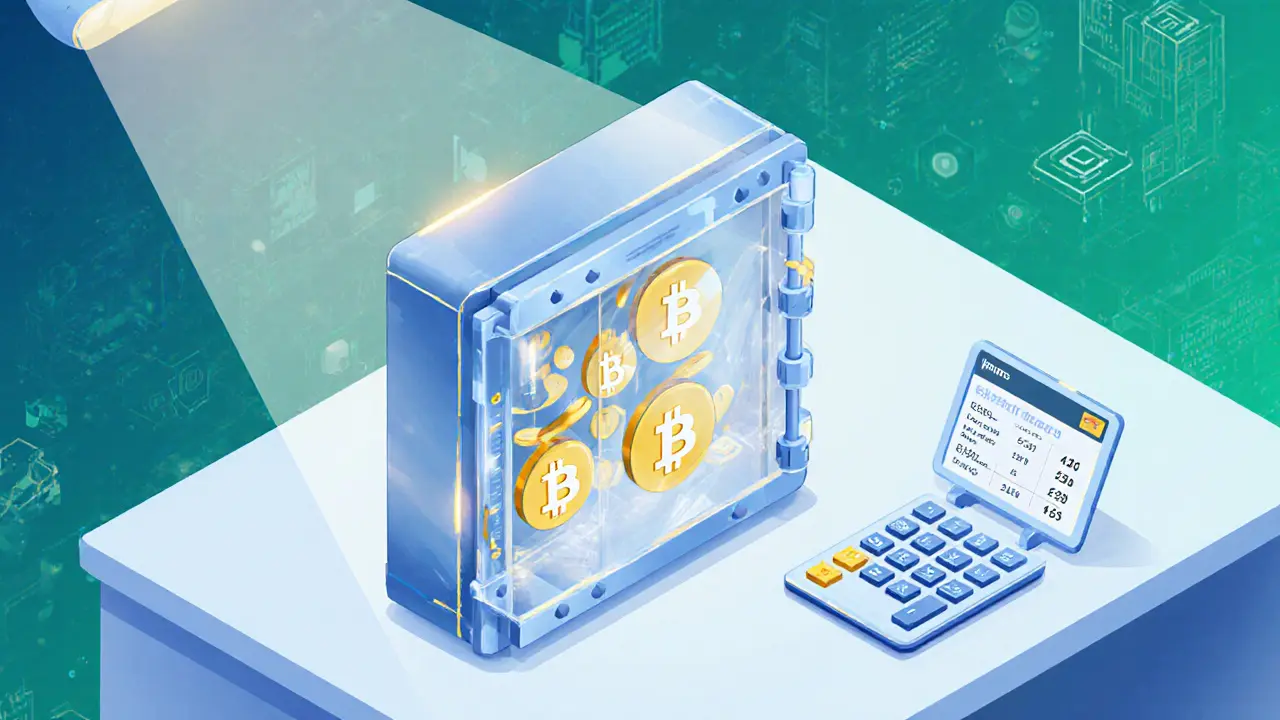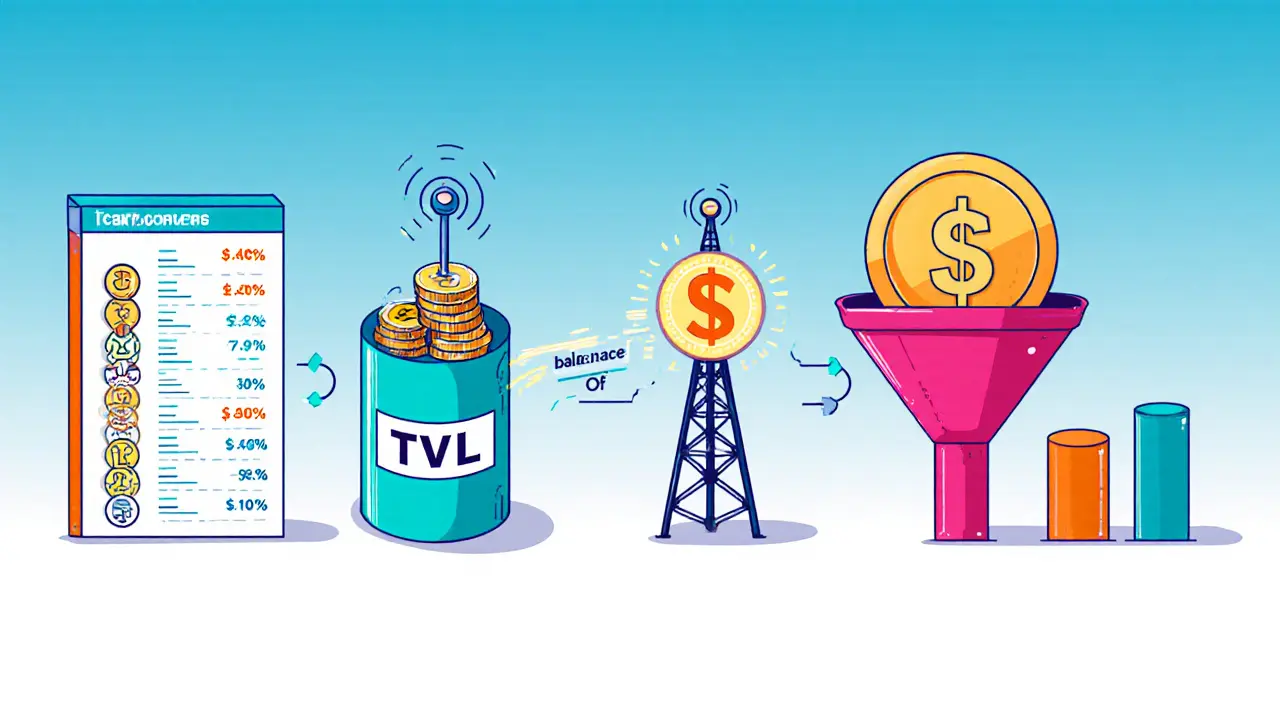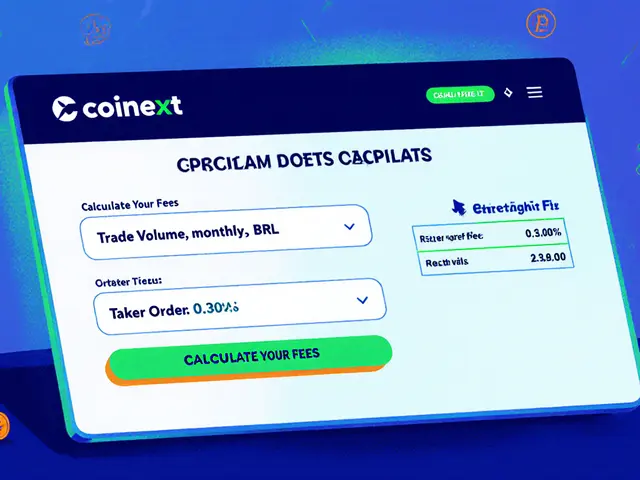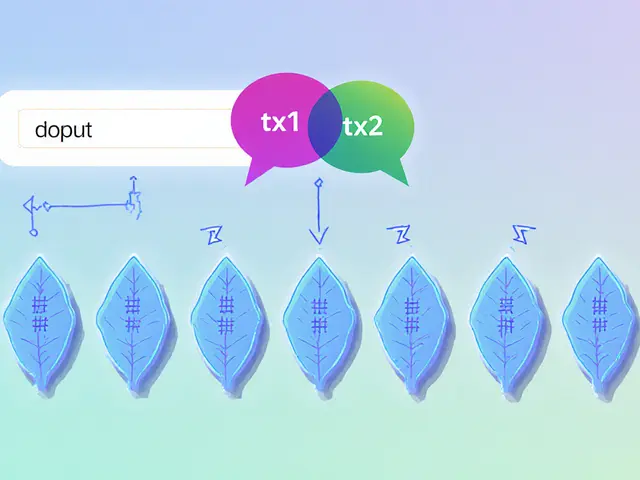- Home
- ::
- Understanding TVL Calculation Methodology in DeFi

Understanding TVL Calculation Methodology in DeFi
DeFi TVL Calculator
Enter token details to calculate Total Value Locked (TVL).
Calculation Results
Enter token details and click "Calculate TVL" to see results.
When a DeFi protocol announces it has "$10billion locked," most readers picture a massive vault of digital cash. But what does that number really represent, and how is it actually computed? Below you’ll get a step‑by‑step breakdown of the TVL calculation methodology, the pitfalls that can distort the figure, and the emerging standards that aim to make the metric more transparent.
Quick Summary
- TVL stands for Total Value Locked - the USD worth of all assets a protocol holds.
- The core formula isTVL = Σ(quantity×current price) for every asset.
- Accurate TVL needs reliable on‑chain data, up‑to‑date price feeds, and a clear handling of collateral and derivative tokens.
- Verifiable TVL (vTVL) uses only on‑chain balance queries, cutting out self‑reported numbers.
- Common misconceptions: TVL ≠ profit and TVL is not a static figure.
What Exactly Is Total Value Locked?
Total Value Locked (TVL) is a metric that measures the aggregate USD value of crypto assets deposited in a Decentralized Finance (DeFi) protocol. It serves as a quick health check: higher TVL usually means more user confidence, deeper liquidity, and a larger economic moat.
Four‑Step Core Calculation
The methodology can be boiled down to four repeatable steps, each of which must be executed with rigor.
- Asset identification: List every token type that the protocol accepts - stablecoins (e.g., USDC, DAI), native coins (ETH, BTC), and any LP‑tokens or yield‑bearing wrappers.
- Quantity determination: Pull the exact on‑chain balance for each token. This is usually a simple
balanceOfcall on the protocol’s smart contract. - Price valuation: Multiply each quantity by its current market price (USD). Prices are typically sourced from reputable oracles such as Chainlink, CoinGecko, or The Graph.
- Aggregation: Sum the USD values across all assets. The resulting figure is the TVL.
Formula:TVL = Σ (Quantity_i × Price_i)
Real‑World Example
Imagine a protocol that holds the following assets:
- 5,000ETH priced at $3,000 each
- 2,000,000USDC priced at $1 each
Applying the formula:
(5,000 × $3,000) + (2,000,000 × $1) = $15,000,000 + $2,000,000 = $17,000,000
That $17million is the protocol’s reported TVL.
Data Sources & Price Feeds
Accurate pricing hinges on trustworthy data feeds. Most aggregators rely on:
- On‑chain oracles (Chainlink, Band Protocol) - provide tamper‑resistant price data directly on the blockchain.
- Off‑chain APIs (CoinGecko, CoinMarketCap) - must be pulled into a trusted backend before being written to an on‑chain contract.
- Exchange order books - useful for low‑liquidity tokens where oracle prices might lag.
Choosing a source with high update frequency (typically every minute) minimizes the lag between market moves and TVL snapshots.

Challenges That Skew TVL
While the math looks simple, several practical hurdles can produce misleading numbers.
- Price volatility: A sudden price swing instantly changes TVL, making real‑time tracking essential.
- Double counting: Some protocols expose derivative tokens that already represent underlying assets; counting both layers inflates TVL.
- Collateral vs. liquidity: Lending platforms lock collateral that may be over‑collateralized. Deciding whether to include the full collateral value or only the portion at risk affects the final figure.
- Liquidity constraints: Tokens with thin order books might be valued at inflated spot prices that cannot be realized in practice.
- External data reliance: A Bank for International Settlements (BIS) study found that 10.5% of protocols pull TVL data from off‑chain servers, opening the door to manipulation.
Verifiable TVL (vTVL) - A Move Toward Standardization
To address transparency gaps, researchers introduced verifiable Total Value Locked (vTVL). vTVL strictly uses on‑chain balance queries, eliminating self‑reported numbers and external oracle dependencies.
The table below contrasts the three main approaches currently seen in the market.
| Metric | Data Source | Verification Level | Typical Use Case |
|---|---|---|---|
| TVL | On‑chain balances + off‑chain price oracles | High, but depends on oracle integrity | General market snapshots, investor dashboards |
| vTVL | Pure on‑chain balance queries | Very high - fully auditable | Regulatory reporting, academic research |
| Adjusted TVL | TVL data + protocol‑specific filters (remove LP tokens, double‑counting) | Medium - relies on manual adjustments | Deep‑dive analytics, risk assessment |
In a recent study of 400 protocols, vTVL matched published TVL figures for only 46.5% of cases, highlighting the prevalence of over‑reporting.
Best Practices for Analysts
- Always pull raw balance data directly from the protocol’s contract address.
- Cross‑check oracle prices against at least two independent sources.
- Identify and strip out derivative tokens (e.g., LP‑tokens) before aggregation.
- Document the timestamp of every price snapshot - TVL can swing dramatically within minutes.
- When comparing protocols, use the same valuation methodology across the board; otherwise the numbers are not comparable.
Common Misconceptions
- TVL equals profit: TVL merely reflects locked capital; it says nothing about revenue, fees earned, or net returns.
- TVL is static: Because asset prices fluctuate, TVL is a moving target that can rise or fall without any user action.
- All locked assets are equally risky: Collateralized debt positions carry liquidation risk, while stablecoins are generally less volatile.
Future Outlook
Standardization efforts are gathering momentum. The DeFiLlama aggregator, for instance, now publishes both raw TVL and vTVL columns for major protocols. Academic groups and industry consortia are drafting guidelines that could make verifiable on‑chain accounting the default. As regulatory scrutiny intensifies, we can expect a shift toward metrics that are both transparent and auditable.
Frequently Asked Questions
How is TVL different from market cap?
Market cap values a token’s total supply at current price, while TVL measures the dollar value of assets that are actively locked inside a specific DeFi protocol. A token can have a huge market cap but zero TVL if nobody is using it in a protocol.
Why do some TVL numbers seem to jump wildly?
Because TVL is calculated by multiplying quantities with live market prices. A sudden price swing in a major asset like ETH or BTC instantly alters the total. Additionally, large inflows or outflows of capital (e.g., a big yield farm entry) can cause spikes.
What is double counting and how can I avoid it?
Double counting happens when a protocol lists both an underlying token and a derivative that already represents that token (like a liquidity‑provider share token). To avoid it, filter out any assets that are merely wrappers for other assets before summing the values.
Is vTVL always lower than regular TVL?
Often, yes. Since vTVL excludes data that can’t be verified on‑chain (like self‑reported off‑chain balances or certain oracle prices), it tends to be more conservative. However, the gap varies widely by protocol.
Can I use TVL to assess a protocol’s risk?
TVL is a starting point, but risk assessment also requires looking at liquidation ratios, code audits, and the composition of locked assets. A high TVL composed mainly of volatile tokens may be riskier than a smaller TVL backed by stablecoins.


 Finance
Finance





Write a comment